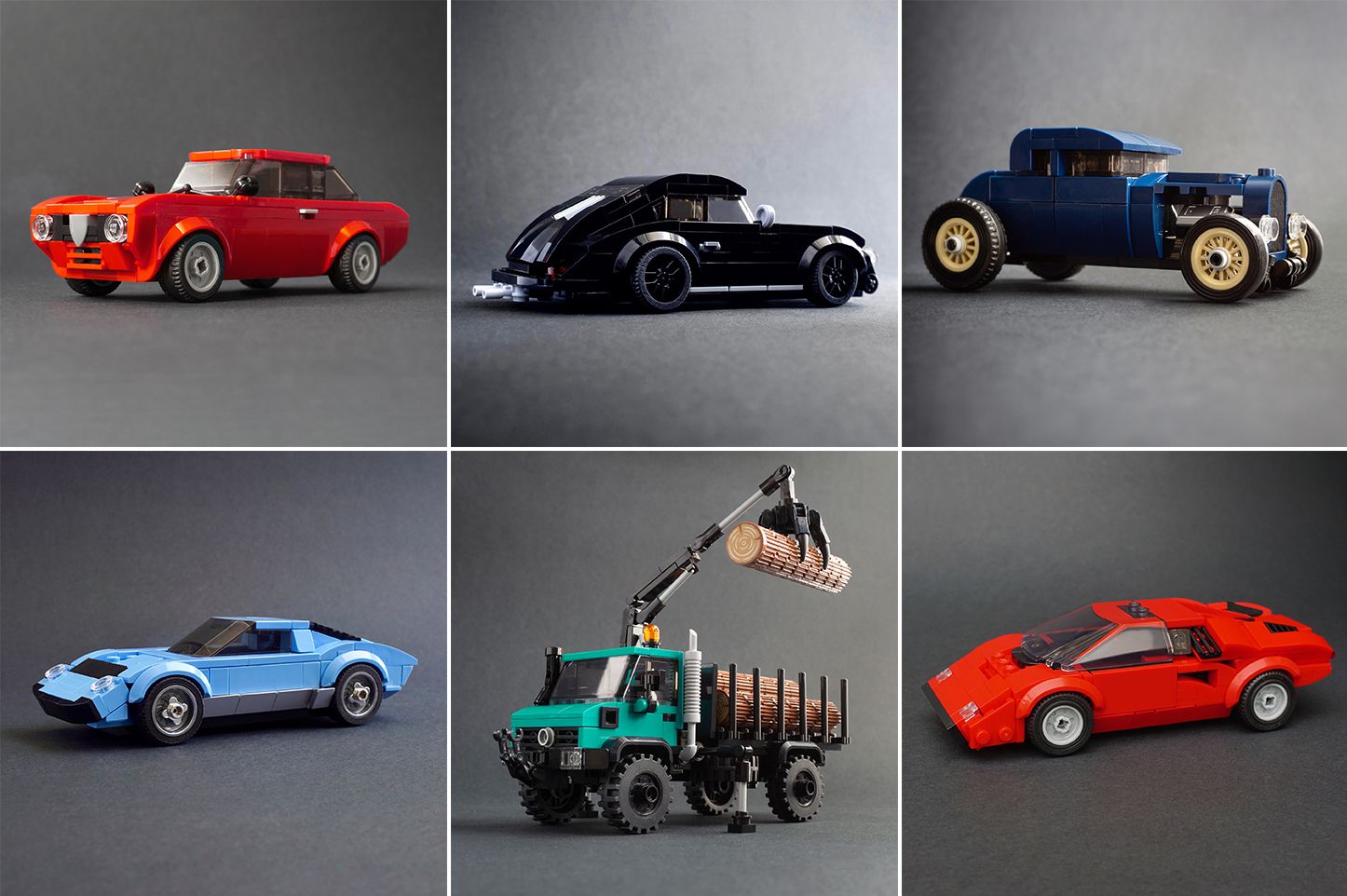
If you love cars, you probably love Lego. We don't know why, but it's just two passions that seem to go hand in hand all the time. Obviously Lego car builds are very popular with petrolheads, and although Lego supplies us with some car models -sometimes even actual replicas licensed by the car brands-, chances are your car is not to be found in any official Lego store.
That's where the MOC community comes in. MOC stands for My Own Creations and it's exactly that: it's people taking available Lego bricks to create their own builds. The beauty of the internet is, they bring these kind of people together on forums, blogs and other online communities. The builders share their ideas, photos and sometimes complete instructions. Sometimes for free, sometimes they sell them.
There's a lot of people out there active in the MOC communities, and they build stuff in all colors, shapes and sizes. You can find amazing drawings for amazingly detailed, like vintage F1 cars in a 1:8 scale. But there's also people who try to create stuff with as little bricks as possible. And everything in between, of course.
One of our favorite builders out there is Jonathan Elliot, who builds some really cool stuff. His cars are not too big. Mostly they come at around 7 bricks wide, which puts them in the size of the official Lego Speed Champions series. Sometimes he goes wider or smaller, but it's mostly around that size.
We asked Jonathan if he wanted to answer some of our questions about his love for cars, his love for Lego and his designs. He gladly obliged, so here you go:
DrivePact: Hi Jonathan, thanks so much for taking the time to answer our questions. Could you introduce yourself to our readers?
Jonathan: Sure! My name’s Jonathan Elliott, I’m 49 years old and I live in South London in the UK. I’m a global strategy director, working for a marketing and communications company. I always wanted to be a car designer and was lucky enough to study car design at Coventry University including a work placement with Ford; life took me in other directions however.
DrivePact: Ok, let's get straight into this: Lego and cars both seem to be quite important when we check you out on social media. Did you, like us here at DrivePact, surround yourself with toy cars and Lego as a kid and just never stopped playing? Or was it something else that triggered this passion? Let's start with the cars, were they always a passion of yours?
Jonathan: I would say that my passion for cars is hard-wired, it’s been there my whole life and for longer than I can remember. Lego and to a lesser degree, toy cars, allowed the very young me to personally connect to -and be creative with- these real-life objects which fascinated me so much.
DrivePact: Please tell us about your life with cars. Like what was the first time a car made real impression on you. Or maybe your first car or the first car of your parents, stuff like that.
Jonathan: My mother always happily shares the anecdote that as a really young child, maybe 2 or 3 years old, I used to ask the names of cars and would remember them all. Very soon after this, still well under 4, we were walking along a street and I said ‘Look mum, there’s a Ford Cortina’, she looked and saw a Vauhall Viva and a Triumph Dolomite as the closest two cars, and corrected me. ‘No, I said, the red one’ pointing further along the street. I had recognised the Ford Cortina by pretty much it’s tail light alone.
I have carried this obsession throughout my life, I’m a nightmare to watch some films with as I spot every car continuity error – differences between the ‘same’ car from shot to shot, cars released after the year in which the film is set and so on.
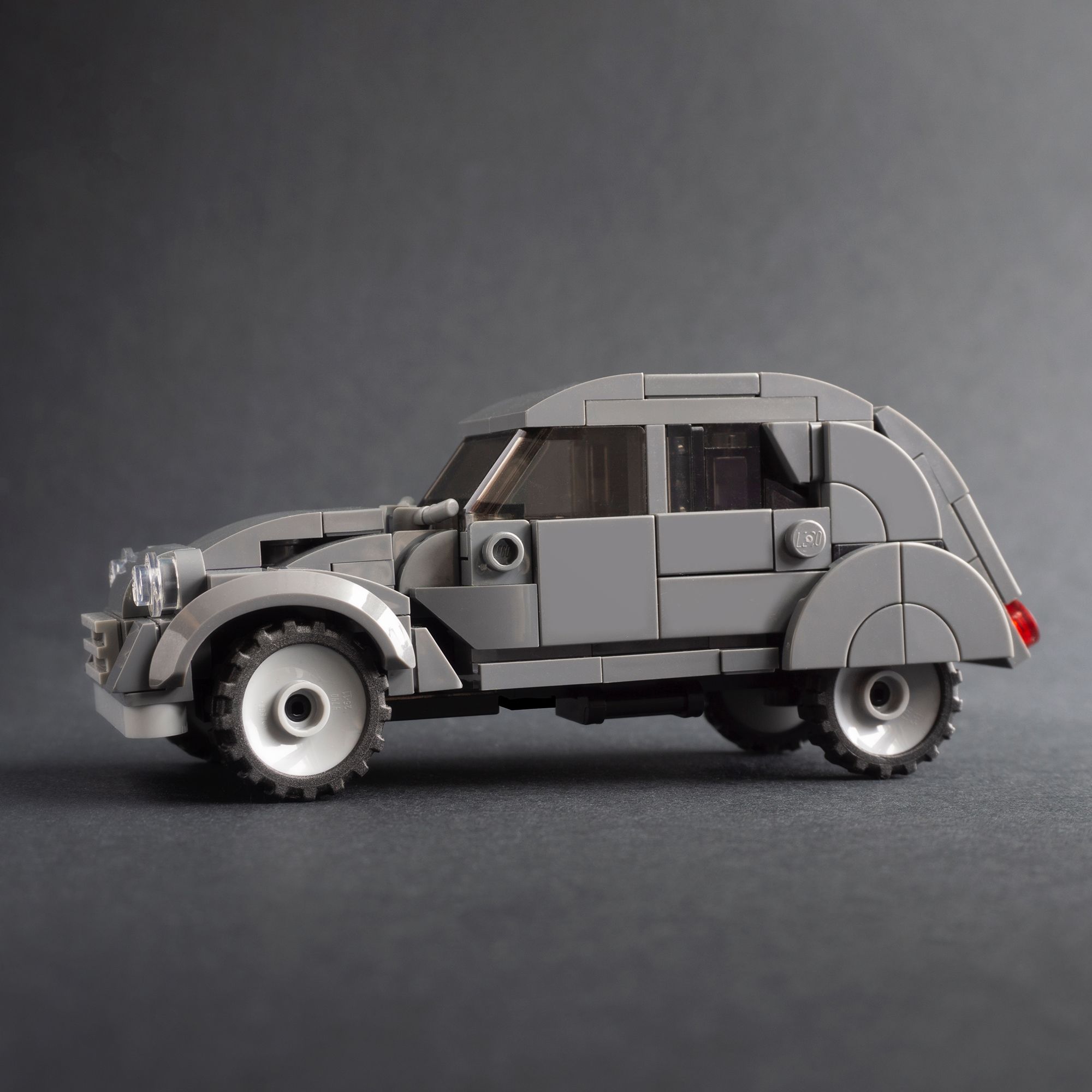
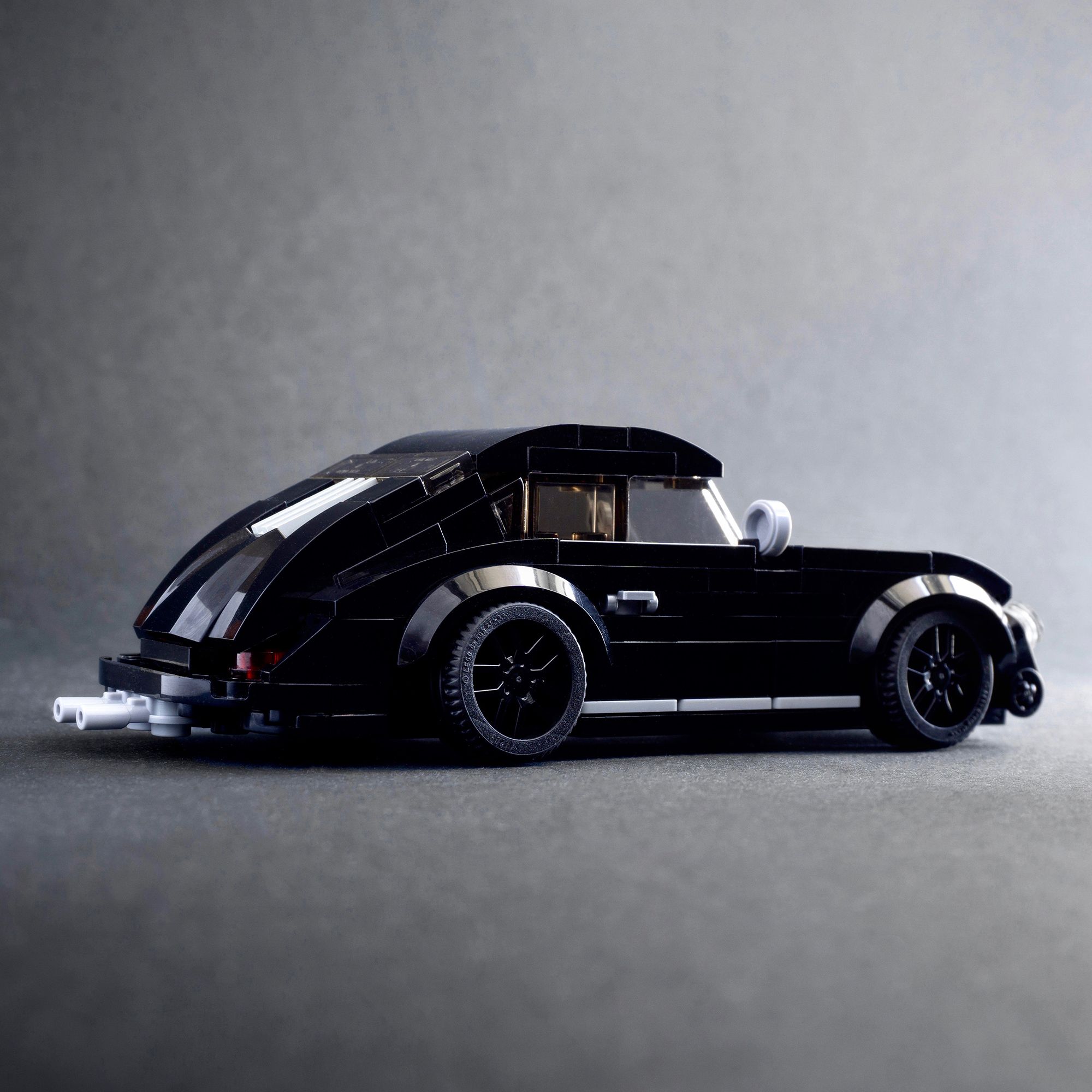
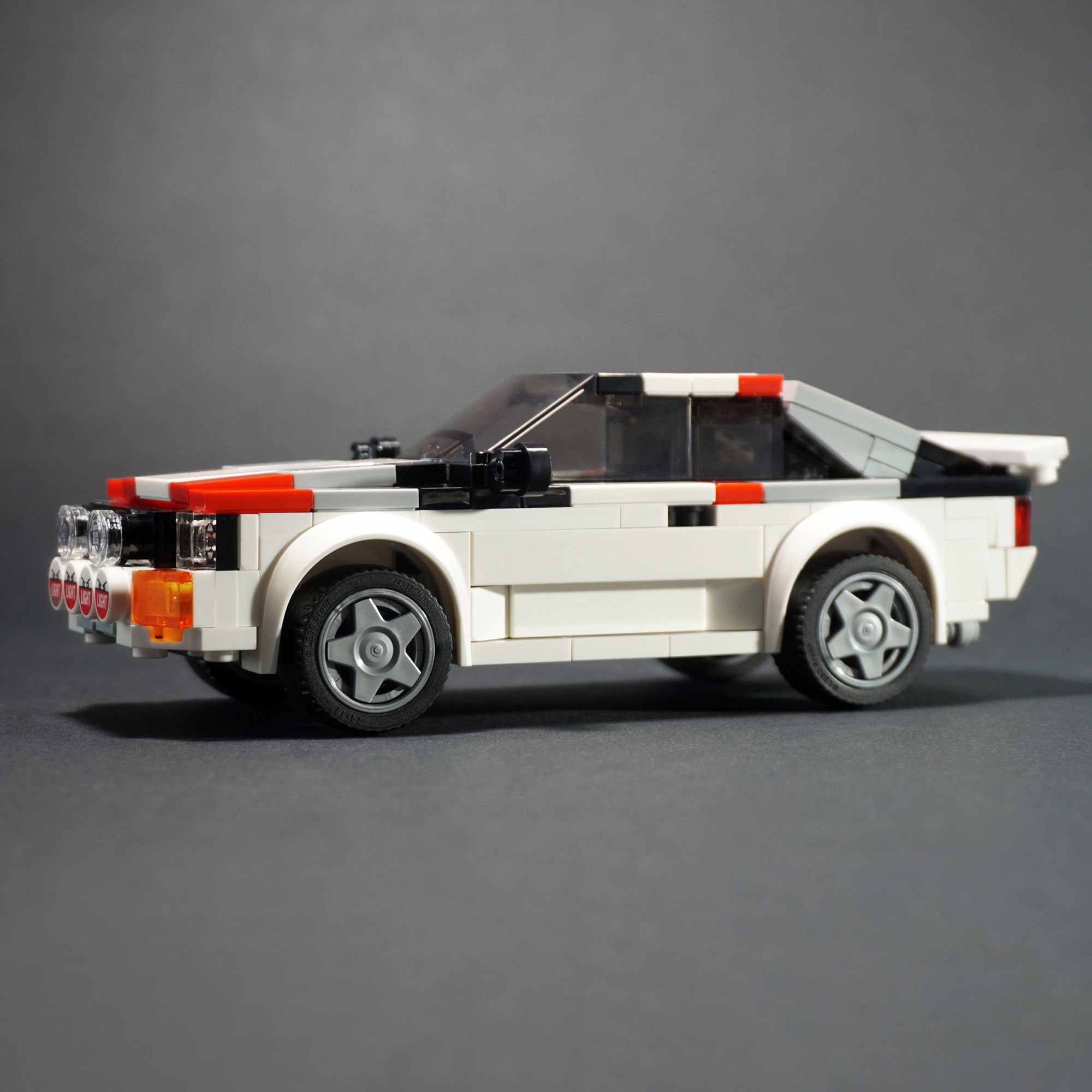
I’ve owned and driven cars without a break since I was 18, my first car was a yellow Citroen Dyane 6 and I’ve since owned many other classic Citroens, Renaults and Peugeots. In later years I have favoured rear-wheel drive German machines – BMW 1, 3 and 5 series as well as a very happy 2 years with a Mercedes-Benz 190E. I have driven as far afield as Morocco, Mexico, the USA, South Africa and Iceland, as well as all over Europe.
So you already know the first car I owned, my favourite was a beautiful grey Citroen DSuper and my current is a Saab 9-3 Estate as I love mountain bikes and I’m too lazy for bike racks!
DrivePact: And the Lego bit? Did you build as a kid? Or was there something else that triggered the passion for these little bricks alter on in life?
Jonathan: Lego featured really early on, I definitely had it from a really young age, it was all really square and blocky back then and I have to confess that I used to help myself to pieces from my kindergarden and take them home. I remember getting some of the really early Technic sets as Christmas presents from the age of 7 and I was definitely an early adopter of combining Technic and System parts.
DrivePact: When did you discover that just building creations by Lego (or maybe other people) wasn't enough anymore? Why did you decide to start creating your own designs? Was there a certain moment, or did it evolve over time? Did you start by modifying existing builds or did you start from scratch?
Jonathan: As soon as I encountered Lego – their sets have always been incredible, but surely the point is to be creative. I always built my own cars and trucks and once the Technic sets arrived my ambitions grew. I have a few out of focus pictures of Land-Rovers, Beach-Buggies towing trailers with Motorcross bikes and so on and vividly remember trying to make complex 4-wheel drive and suspension systems long before it was really possible.
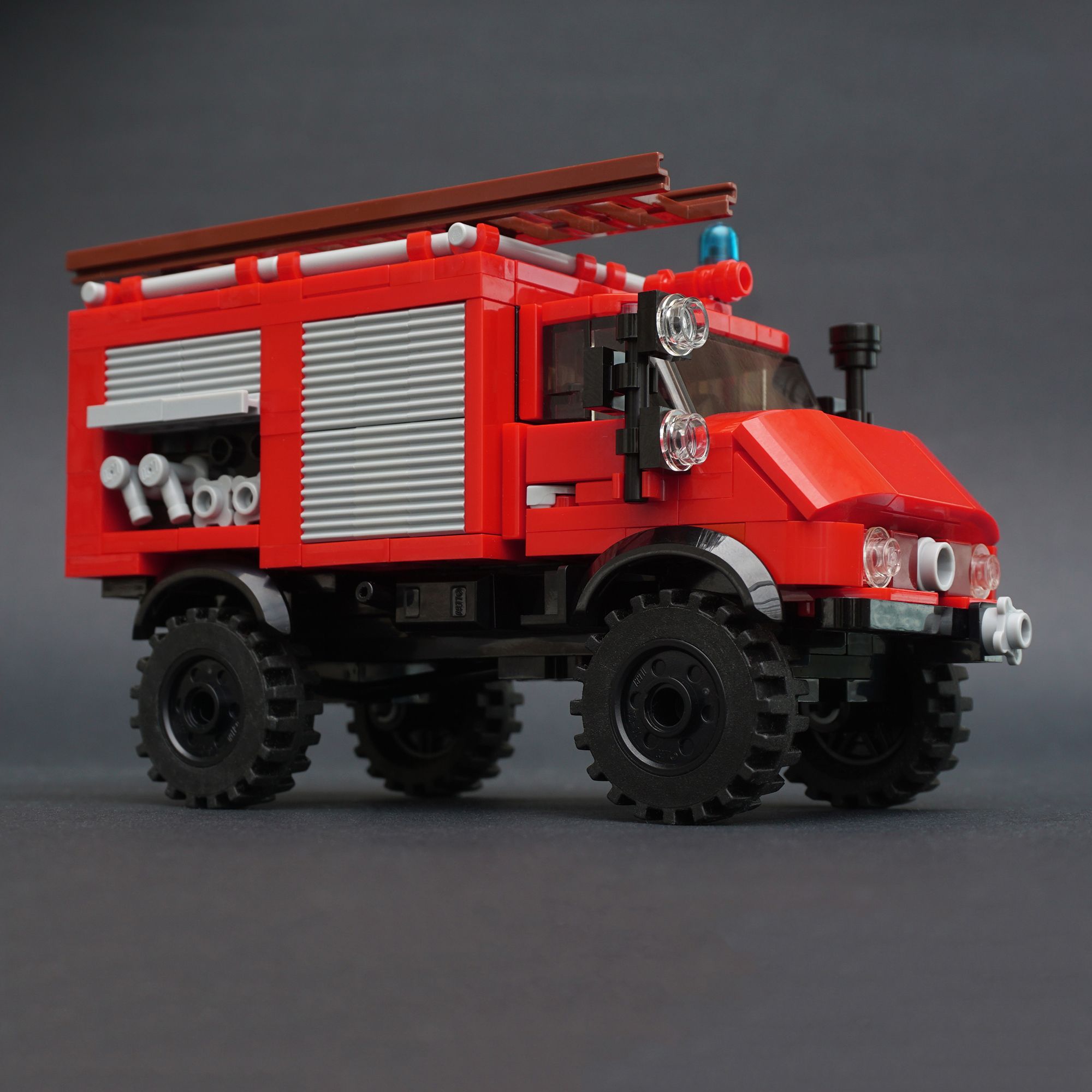

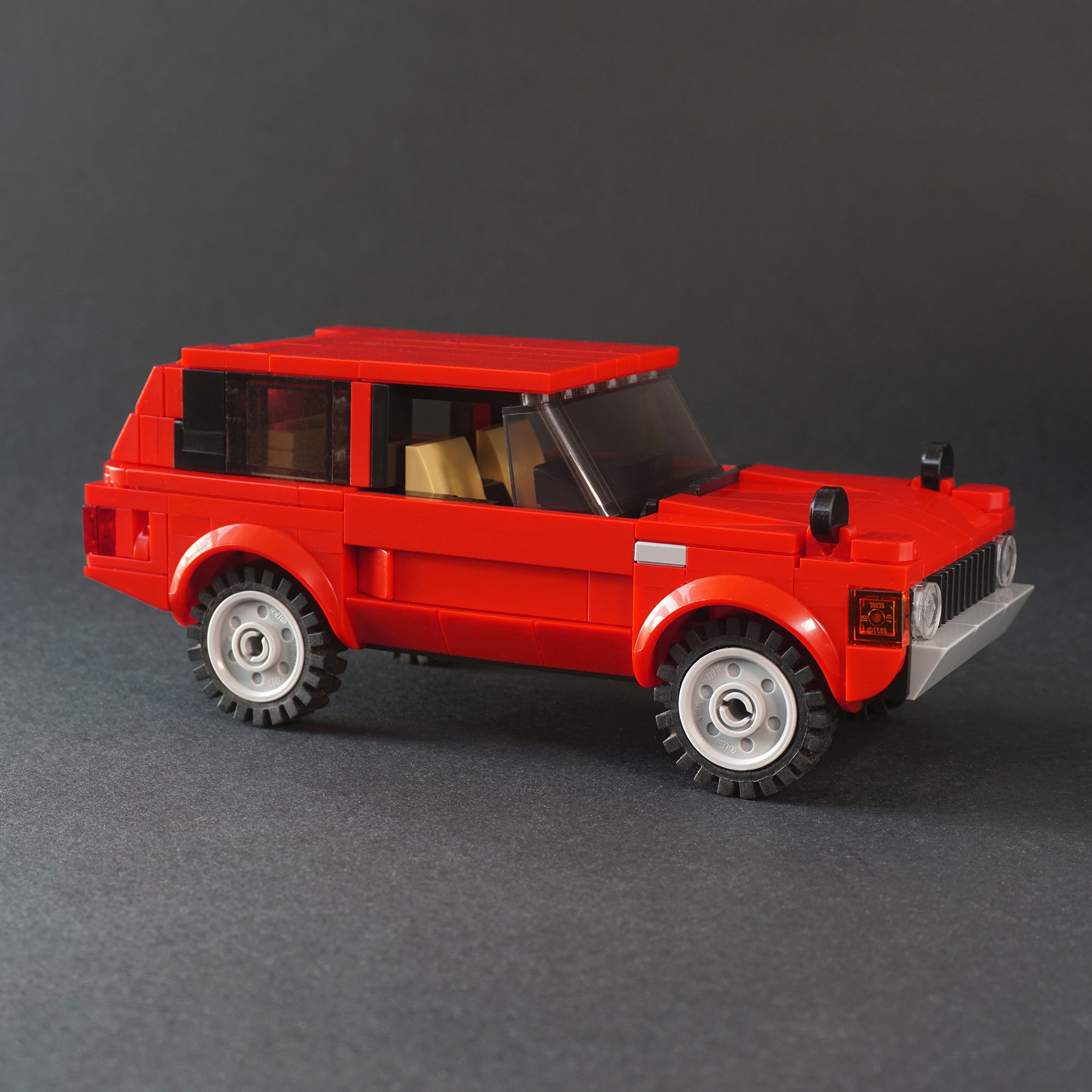
I’m also convinced that my uncanny ability to park and manouvre all sizes of vehicles and trailers in real-life stems from doing exactly that with Lego in my youth.
DrivePact: Do you choose the cars you build all by yourself? Or do you build them on request?
Jonathan: You have probably realised that I have a bottomless pit of inspiration for my builds, so most are my own choices. But sometimes it’s great to collaborate on custom builds with fellow car enthusiasts. It’s good to step out of my comfort zone and really try and make something I had not imagined would work in Lego a reality.
DrivePact: When we look at your work we see details we wouldn't think possible. We're also really impressed with how you manage to replicate the surfacing and proportions of the cars. It's incredible to see the flow of lines and bodywork come back in such a small scale, achieved with the limited shapes of building blocks Lego provides. Are surfacing and those tiny details like the doorhandles on the Giulia or the mirror placement on the Toyota 2000 GT the most important aspects when designing?
Jonathan: At such a small scale the proportions and key features of the car are paramount – the smallest movement that Lego pieces can give is 1.6mm (the difference between the height and width of a brick). My models are so small that this would equate to more than 5cm in real-life, so you have to work in broad brush-strokes, get the overall weight and feel right and then add those big, statement features. A good knowledge of unlikely Lego parts helps here – rollerskates, lipsticks, hotdogs and animal horns have all featured in my builds.
DrivePact: Can you tell us a bit about the design process? Do you start with a rough shape and narrow it down? Or do you start with designing them on the computer? Do you have all the bricks you need now or do you need to buy them specifically?
Jonathan: I prefer to design using real bricks and trial and error, although since starting to use Studio2, a digital platform to create instructions, I have also embraced this medium. I of course refer to pictures of the real car before and during any build. But I mostly work from memory, rather than slavishly try and match real life dimensions or replicate every last detail. I think this helps to capture the essence of the real car, which could otherwise be lost in clumsy compromises or overthinking.
DrivePact: How much time does it take to design and build a car?
Jonathan: It can take anywhere from a couple of hours to maybe 20 or more, my Lamborghini Miura took about two hours from a table-top of bricks, but my Countach took several evenings over the course of a week and buying in many pieces specifically.
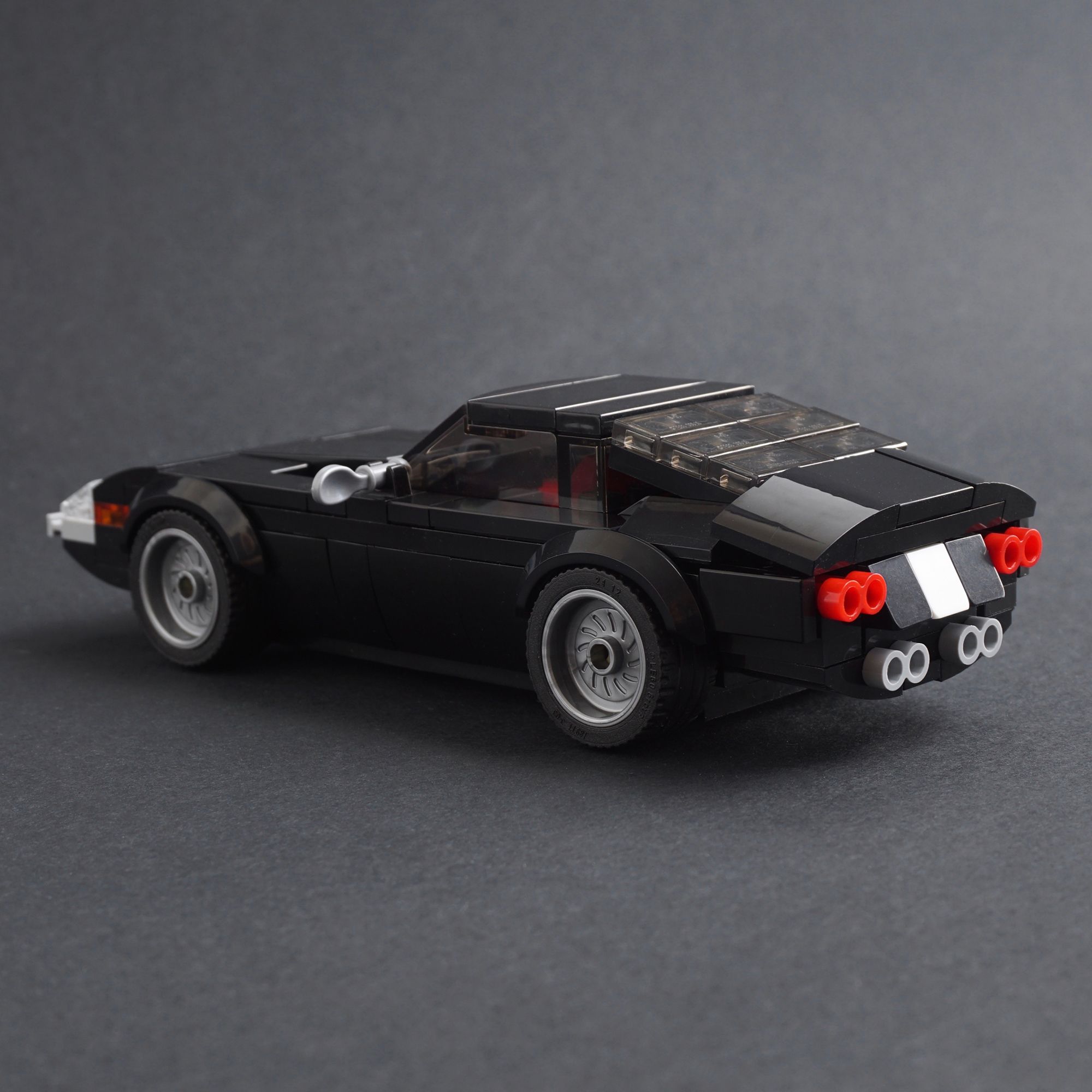
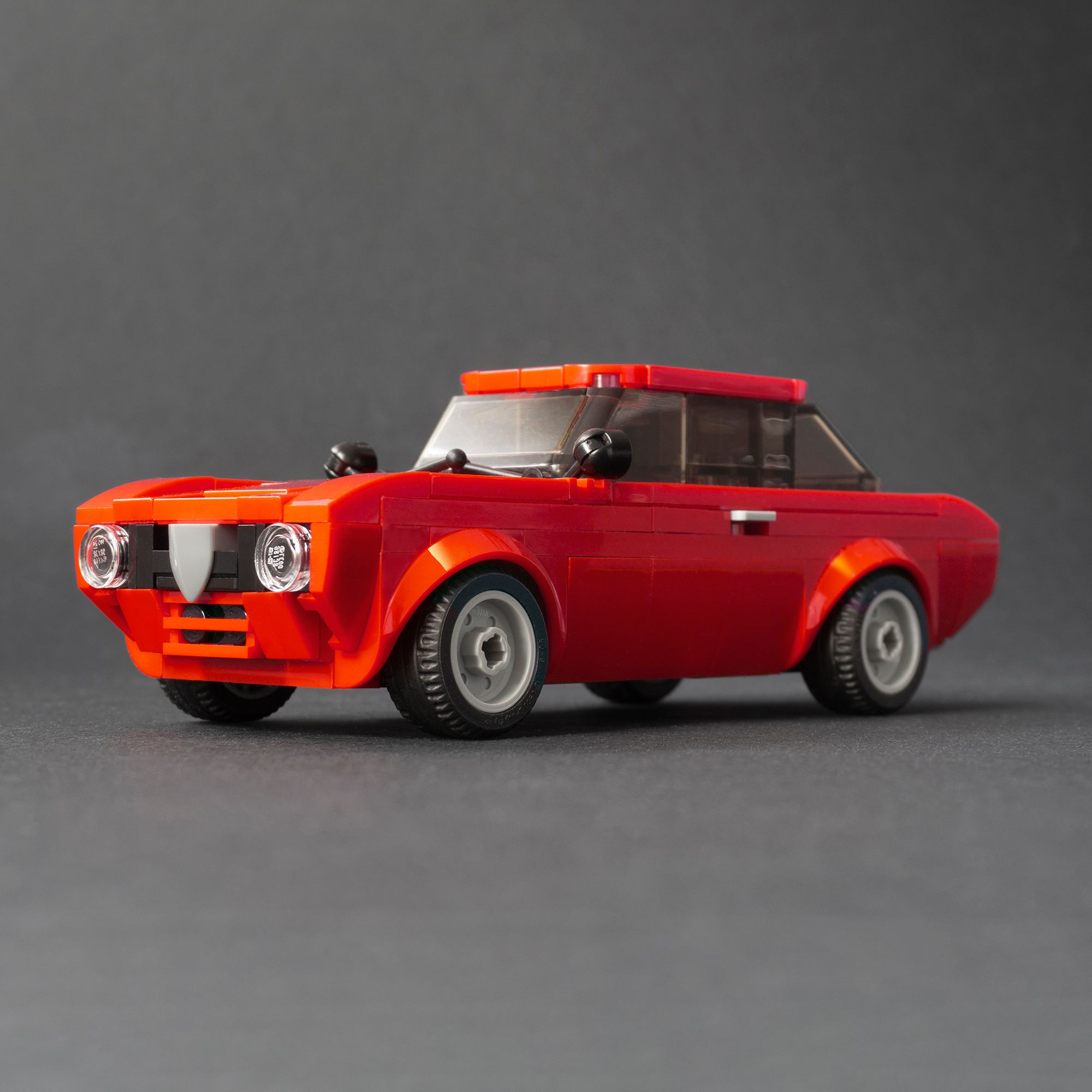
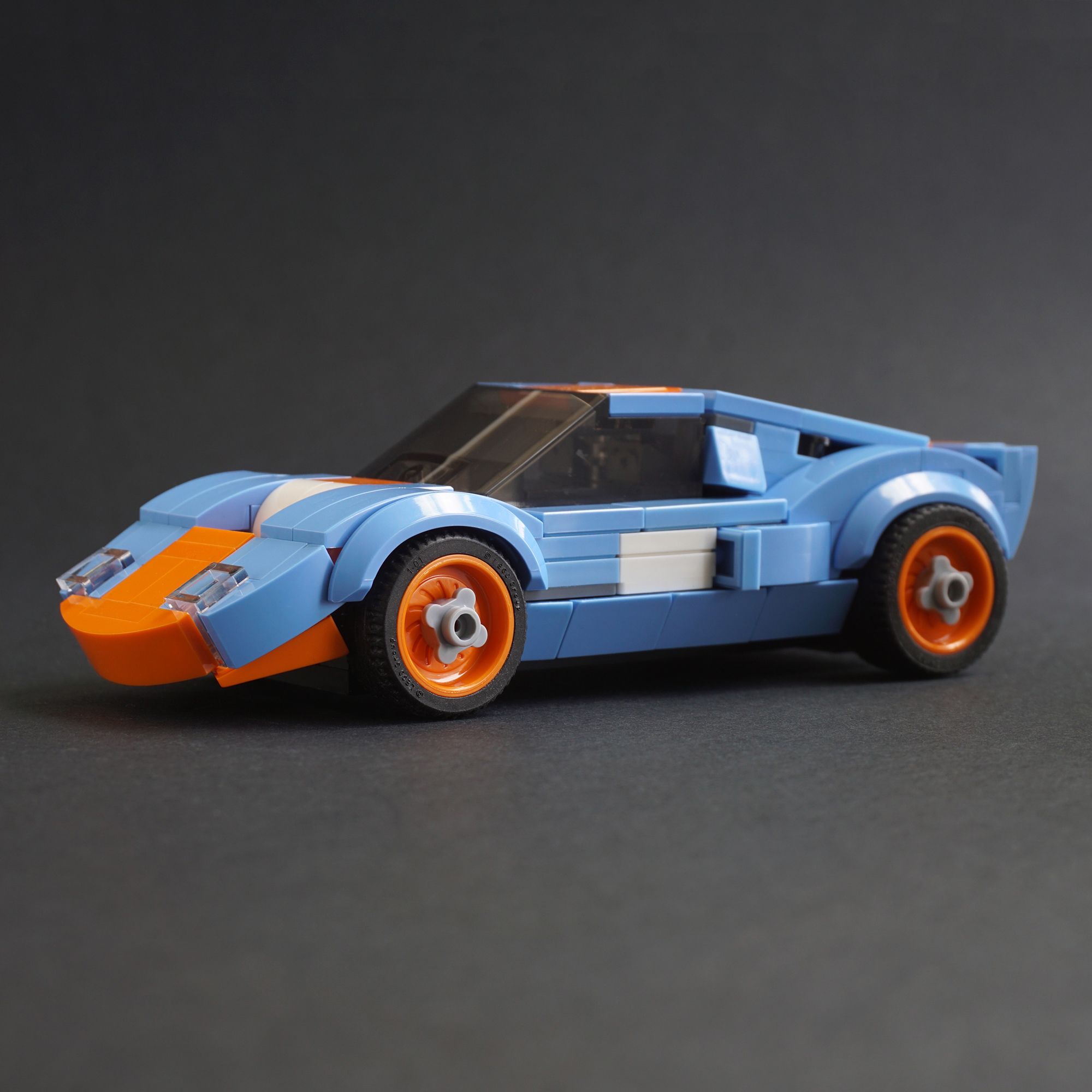
DrivePact: Do you still have all the cars you designed in one piece? Or do you tear them down when you need bricks for a new project?
Jonathan: The benefit of hindsight should never be overlooked, a part of me wishes I had kept them all, but I must confess that I currently only have about 25 cars in one piece at home – I have built well over 100. I could (and have) rebuild any of them, but there’s always the next, newer, better one to design!
DrivePact: We know there's some bricks out there that are incredibly hard to find, and very expensive to buy. If you encounter a moment where you think 'I need this super rare, expensive brick to perfect this design', will you go for it, or settle for a more affordable solution?
Jonathan: I try to build with only bricks that are current – the exception here are my hot rod builds, which often use tyres from the 1970’s (Lego seemed to favour big, fat tyres these days) – the biggest challenge is with colour choices. There are some cars that just have to be a certain colour and some parts are rare in certain colours. I just bought 4 mudguard parts in yellow, which are very rare and they cost about twice as much as all the parts for a typical build.
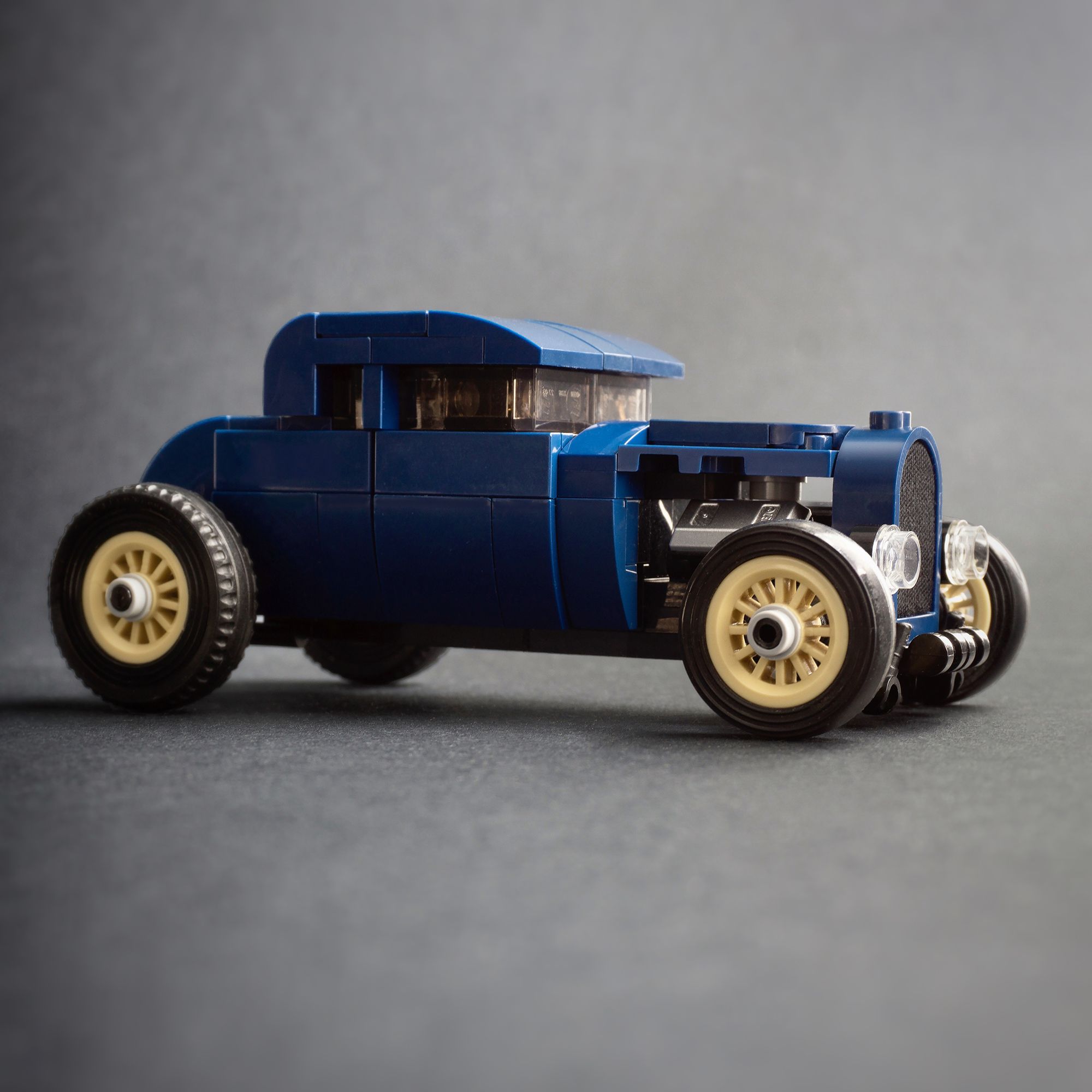
DrivePact: You sell your designs as complete kits, but also the instructions without the bricks. Do you have any advice on where to buy the bricks needed? Are there specific market places or websites people should know about?
Jonathan: I buy everything from bricklink.com, a brilliant fan-based online marketplace – if Lego made or make it, it’s there – Lego purchased the site last year and so far have done a fantastic job of maintaining it’s diversity and scope.
DrivePact: For how long have you been building your own creations, and when did you start converting the builds to the building instructions you now sell?
Jonathan: I started building Lego sets again about 8 years ago after a 27 year absence, a couple of Technic sets, then some large scale designs of my own and then a few small-scale evening builds. Posting these on Flickr got me invited to a Speed Champions scale building competition, which I loved being involved with and the genie was out of the bottle.
Once I started to see how much people liked my work on both Flickr and Instagram I decided to start making instructions and kits available in 2018.
DrivePact: Is selling Lego instructions and Lego kits making you a living? Or is it something you do on the side? Is it (or would you like it to be) a full time job?
Jonathan: It’s a sideline at the moment and a great way to pay for my own Lego, but I have bigger plans for 2021 and may start deploying a more strategic approach – watch this space!
DrivePact: You also seem to put quite some time in the presentation. The photography of the models is very clean. Do you have a background in photography?
Jonathan: I’m a perfectionist and for me, the presentation is as important as the design. I want people to see the car I am trying to represent in the best possible light, so have taught myself some photography and photoshop skills. I’m still learning and spend almost as long taking the pictures and their post-production as building the models.
DrivePact: How much time do you spend a week on designing new Lego cars?
Jonathan: Physically, maybe 10 hours, mentally, more like 100! I design in my head whilst going to sleep most nights.
DrivePact: Ok, time to round things up a bit. Let's do the obvious question. The one you knew was coming all along: what's the best design you've created? And why?
Jonathan: The Lamborghini Countach – as a car fan it was an itch I had to scratch, but until the latest series of Speed Champions cars were released there was no windscreen piece that was right. As soon as I saw the new Ferrari F8 Tributo set I knew that windscreen would work. The reality of building the rest of the unique Countach shape was hard, the combination of wedges and curves, the angled rear wheel archrches and those rear shoulders. A real head-scratcher.
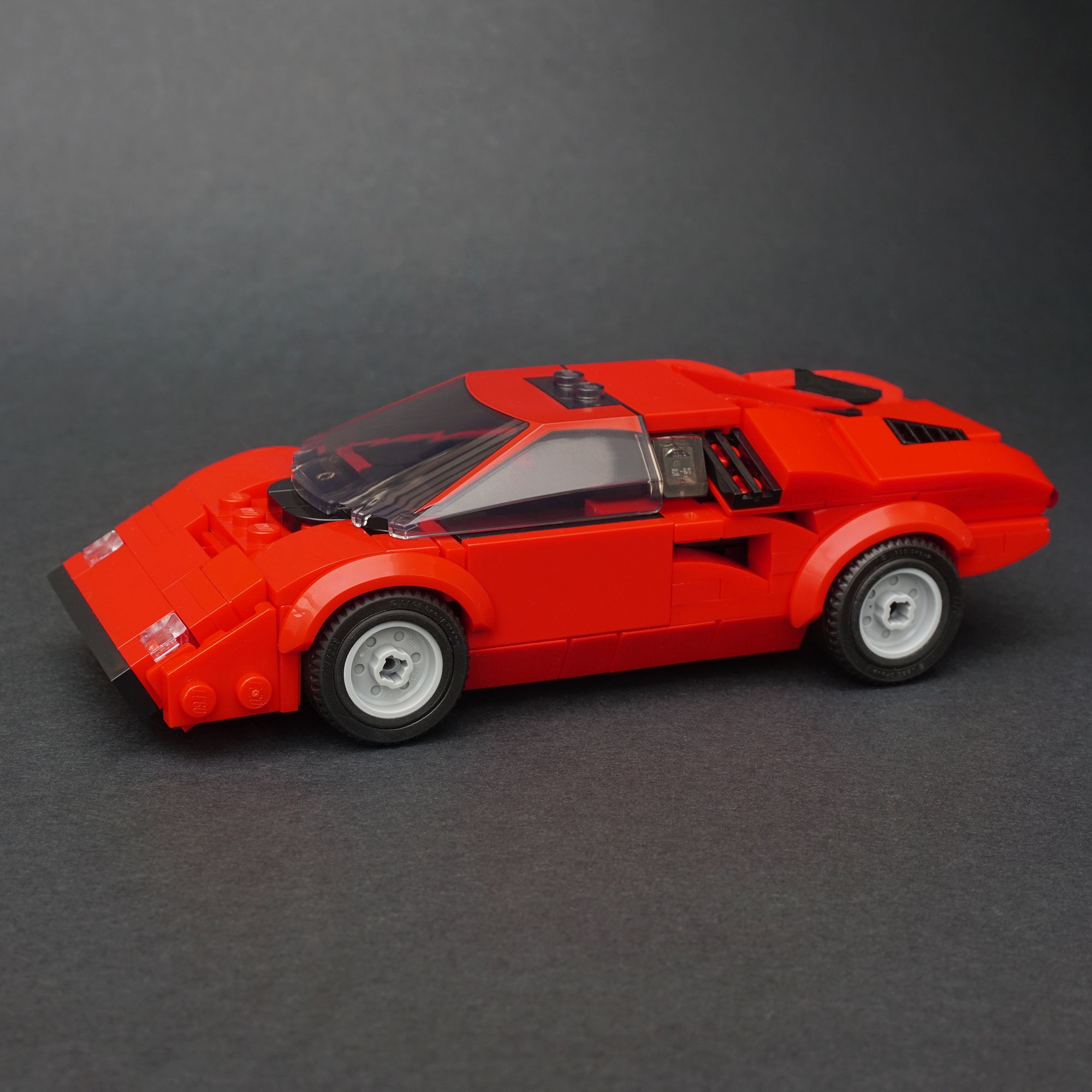
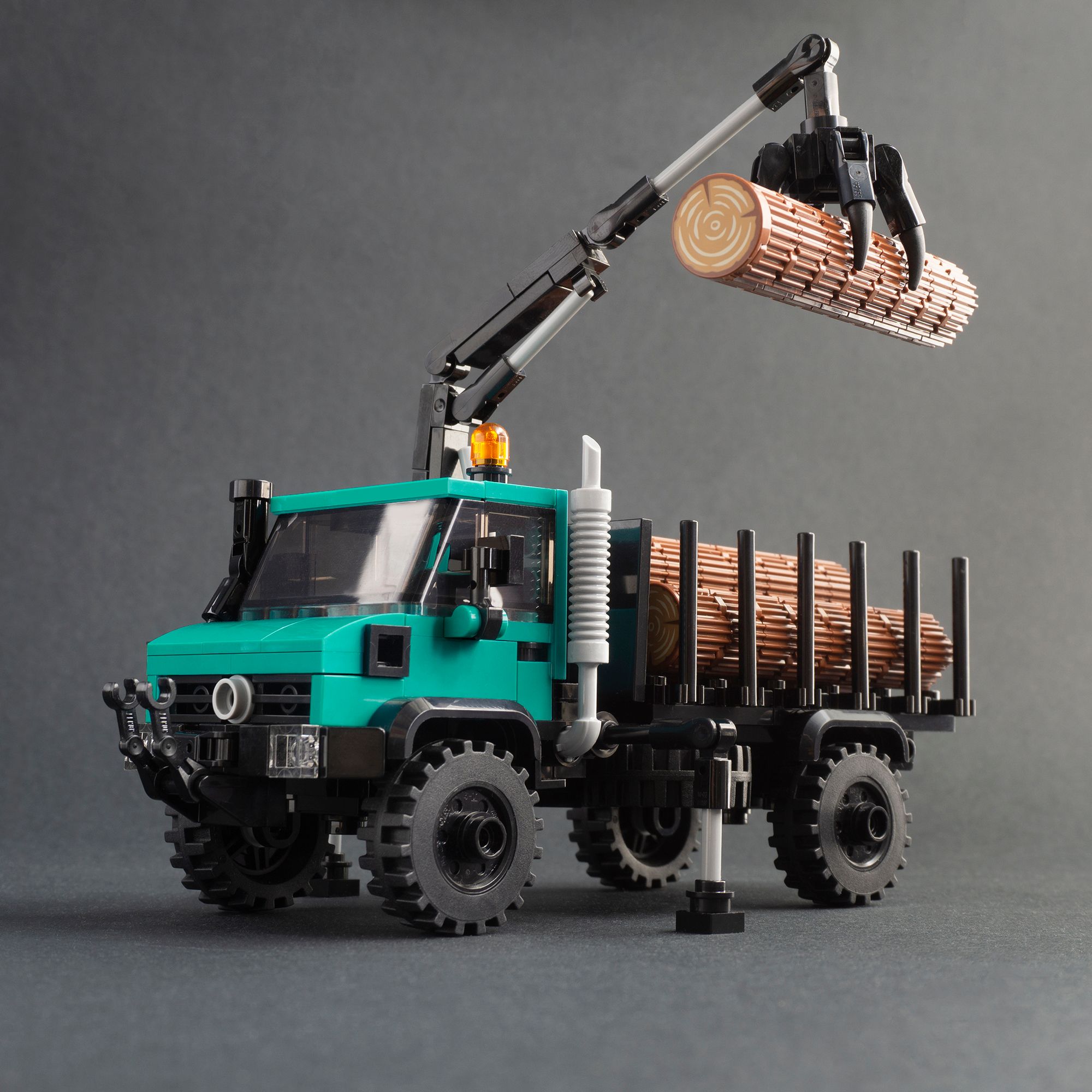
DrivePact: Is it also your favorite design, or is there another one you'd like to tell us more about?
Jonathan: No, my favourite is my Unimog logging truck – nothing in particular was very hard to build, but the combination of the colour, the mechanical features and the logs themselves is so cohesive. I’m really proud of it.
DrivePact: Did we forget to ask you something or have we covered it all?
Jonathan: What’s my favourite real-life car? There’s not a single answer, but I adore the Renault R4 as a perfect utility tool. The Maserati Khamsin is for me the finest and most handsome GT car ever and the Mercedes-Benz 190 (W201) is an object lesson in understated elegance and possible the most perfectly proportioned car ever designed.
DrivePact: That was a really good question (and answer) to add to this! Thank you so much for taking the time Jonathan. Please keep us informed about future releases that would be of interest to our audience! And speaking of those: if they have specific requests, where can they find you?
Jonathan: I’m currently designing my first larger scale car for some time, I’m excited to share it when its ready. Other than that there’s the never-ending list of things to try and build. Anyone can find me on Instagram @jon3lliott – I answer every DM I receive.
DrivePact: Thanks again, Jonathan!
If you like Jonathan Elliott's work and want to buy any of his builds, you can find his build instructions on his website.

All photos by Jonathan Elliott
